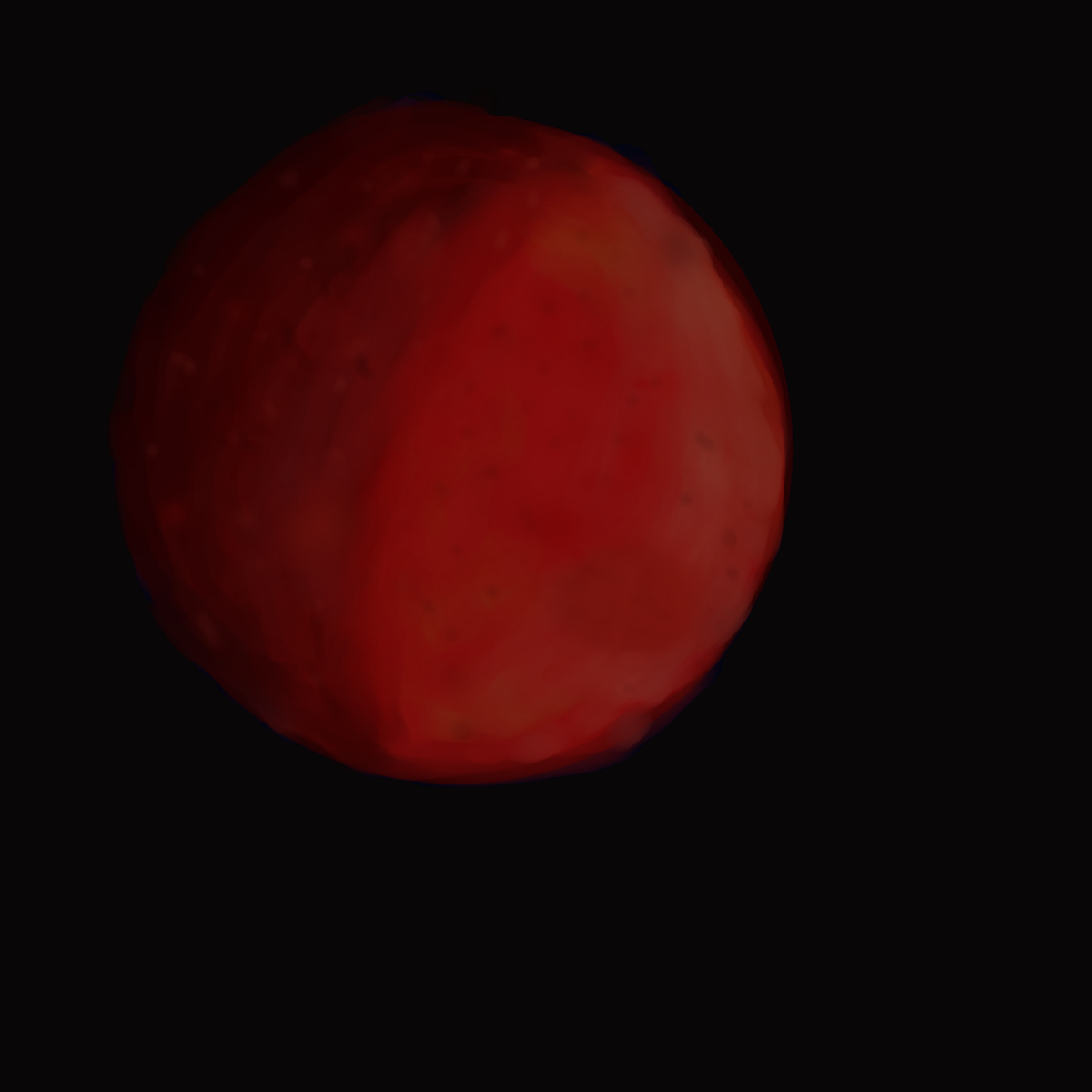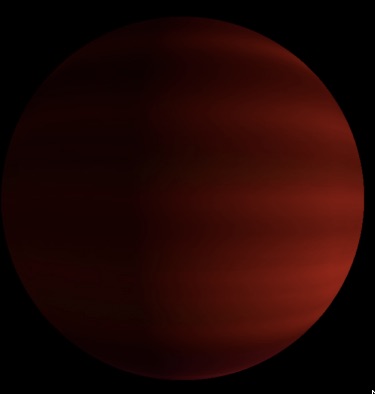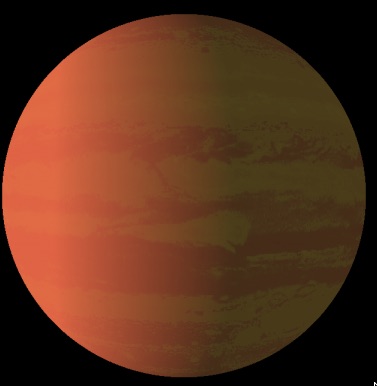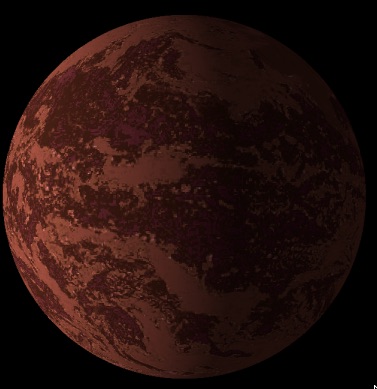GJ 9827 c
(Imaginary Picture of GJ9827 c: Ryusuke Kuroki, Fuka Takagi & Yosuke A. Yamashiki)
GJ9827 (also known as K2-135) is a K6 type star (with a surface temperature of 4255K, a mass and radius about 0.7 times that of our Sun) about 100 light-years away from the Earth. It was discovered by the transit method during the K2 mission (the second mission of the Kepler Space Telescope). Scientists found three Super-Earths (planets with a mass and radius several times that of the Earth) orbiting the star, reported in the Astronomical Journal published in February 2018. These three Super-Earths (GJ9827b, GJ9827c, GJ9827d in order of closeness to the host star) have radii of 1.62 times, 1.27 times, and 2.07 times the Earth, and their orbits around the host star are 1.2 days, 3.6 days, and 6.2 days, respectively.
The planet is a suitable candidate for more detailed observation of its planetary atmosphere using the James Web Space Telescope (JWST), which will be launched in a few years. These observations of Super-Earth atmospheres are said to be the key to understanding the atmospheric and internal structure of these types of planets, which are located at the boundary between the terrestrial planets (rocky planets) and gaseous planets, such as Jupiter. This is why the GJ9827 planetary system is so promising.
Journal Articles
1.) A System of Three Super Earths Transiting the Late K-Dwarf GJ 9827 at 30 pc
2.) Mass determination of the 1:3:5 near-resonant planets transiting GJ 9827 (K2-135)
3.) HD 106315 and GJ 9827: Understanding the Formation and Evolution of Small Planets
WEB Articles
1.) Planet GJ 9827 c
2.) THREE POSSIBLE SUPER-EARTHS DISCOVERED AROUND NEARBY SUN-LIKE STAR
3.) Planetary System GJ 9827, Secrets Of Far-Away Super-Earth










